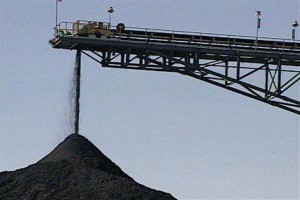1,200 New Coal Plants Planned Around The World
 Some weeks, a few news stories come together to illustrate just how dire the situation is for the world’s climate. This week is one of them.
Some weeks, a few news stories come together to illustrate just how dire the situation is for the world’s climate. This week is one of them.This morning, new data from the World Meteorological Organization showed that carbon dioxide, methane, and nitrous oxide levels hit record highs in 2011. As of last year, concentrations of CO2 — one of the most abundant heat-trapping gases — hit 390.9 parts per million. (350 ppm is what many scientists say is the upper limit on “safe” levels of CO2).
According to WMO, we’ve seen a 30 percent increase in “radiative forcing” — i.e. the amount of heat trapped on earth — since 1990.
These record levels of greenhouse gas emissions aren’t a huge surprise considering that other organizations have reported similar findings. The real news is what the world intends to do about it. And according to a new report on the global pipeline for coal-fired power plants — a technology that accounted for 45 percent of CO2 in 2011 — there’s not much hope for slowing the record pace of global warming pollution.
According to a new analysis released today by the World Resources Institute, there are nearly 1,200 new coal plants planned for construction around the world. Most of those plants will be built in China and India, but there are dozens planned for America, Australia, Europe, and Russia.
The report outlines virtually every coal plant announced around the world. That does not necessarily mean that every one will get built. In the U.S., for example, it is highly unlikely that many — if any — new coal plants will move forward as cheap natural gas, growing renewables, and legal pressure from environmental groups trips up the pipeline. (Also, as Justin Guay of the Sierra Club points out in a piece today, local resistance in communities around the world is also hindering many of these projects).
But the tally is still staggering. If all these plants were built, they would amount to generation capacity four times greater than the entire U.S. coal fleet. And to see just how rapidly coal consumption is increasing in Asia, take a look at this animated graphic from the Energy Information Administration.
Ironically, the World Bank — a lending institution responsible for helping finance some of the world’s largest coal plants — released a report this week outlining the “devastating” consequences of our current emissions path. Summarizing leading climate change research, the institution warned that the planet is on track to warm by 4 degrees Celsius by the end of the century, thus triggering “extreme heat-waves, declining global food stocks, loss of ecosystems and biodiversity, and life-threatening sea level rise.”
That’s more conservative than the International Energy Agency, which warned recently that we are on a path toward 5.7 degree Celsius warming by the end of the century. The IEA also issued a resource assessment last week concluding that we must leave roughly two-thirds of carbon reserves in the ground in order keep global temperature rise at 2 degrees Celsius — a widely-recognized threshold for preventing catastrophic climate change.
It’s clear that we’re still nowhere near considering that as an option.
You can return to the main Market News page, or press the Back button on your browser.

